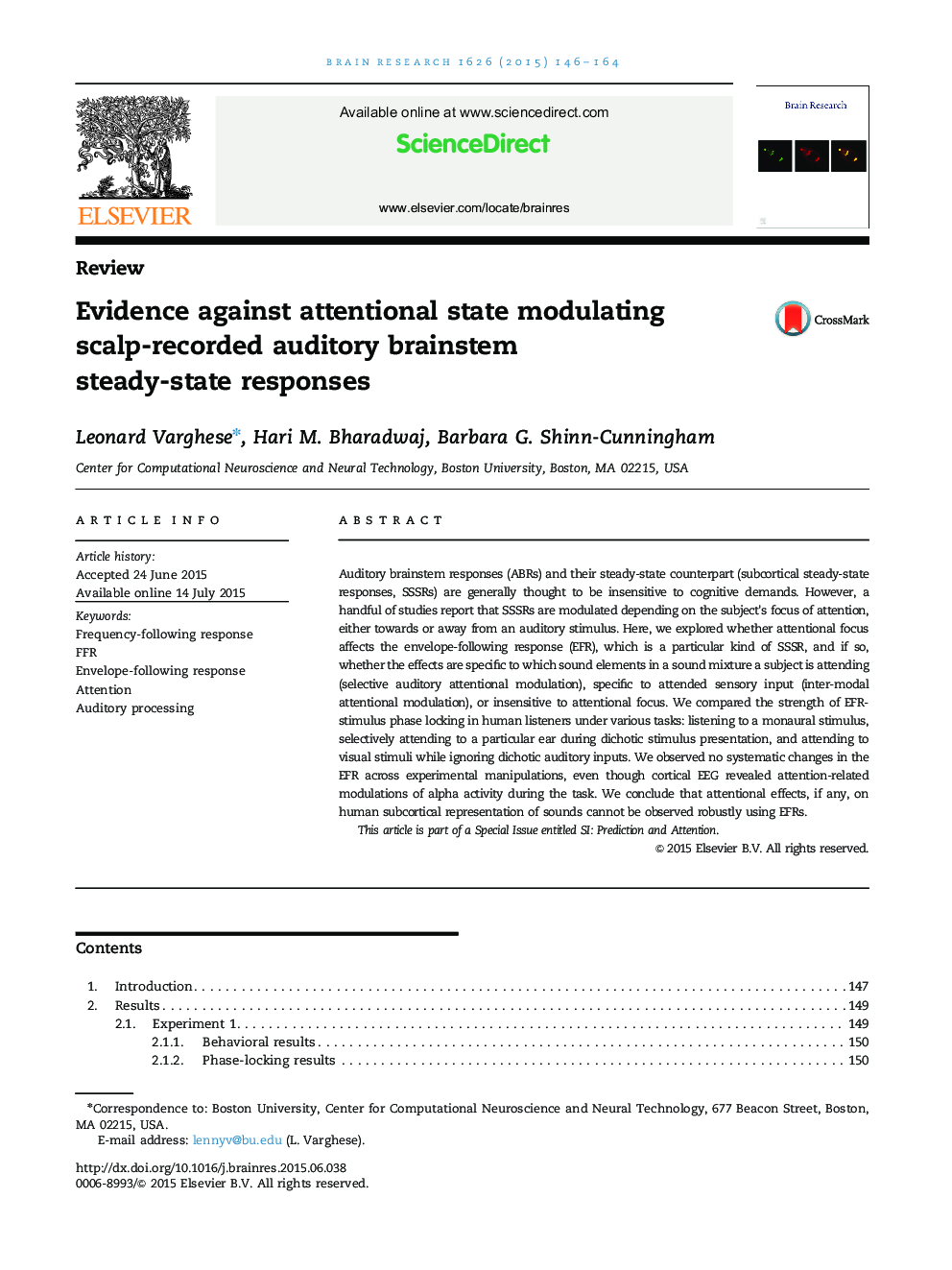| کد مقاله | کد نشریه | سال انتشار | مقاله انگلیسی | نسخه تمام متن |
|---|---|---|---|---|
| 6262807 | 1613813 | 2015 | 19 صفحه PDF | دانلود رایگان |
- Top-down attention was not found to affect auditory envelope following responses.
- Despite optimizing stimulus parameters to find attentional effects, none were found.
- Net evidence from present and previous studies suggests that online attention effects on the brainstem cannot be reliably observed from scalp potentials.
Auditory brainstem responses (ABRs) and their steady-state counterpart (subcortical steady-state responses, SSSRs) are generally thought to be insensitive to cognitive demands. However, a handful of studies report that SSSRs are modulated depending on the subject׳s focus of attention, either towards or away from an auditory stimulus. Here, we explored whether attentional focus affects the envelope-following response (EFR), which is a particular kind of SSSR, and if so, whether the effects are specific to which sound elements in a sound mixture a subject is attending (selective auditory attentional modulation), specific to attended sensory input (inter-modal attentional modulation), or insensitive to attentional focus. We compared the strength of EFR-stimulus phase locking in human listeners under various tasks: listening to a monaural stimulus, selectively attending to a particular ear during dichotic stimulus presentation, and attending to visual stimuli while ignoring dichotic auditory inputs. We observed no systematic changes in the EFR across experimental manipulations, even though cortical EEG revealed attention-related modulations of alpha activity during the task. We conclude that attentional effects, if any, on human subcortical representation of sounds cannot be observed robustly using EFRs.This article is part of a Special Issue entitled SI: Prediction and Attention.
Journal: Brain Research - Volume 1626, 11 November 2015, Pages 146-164
